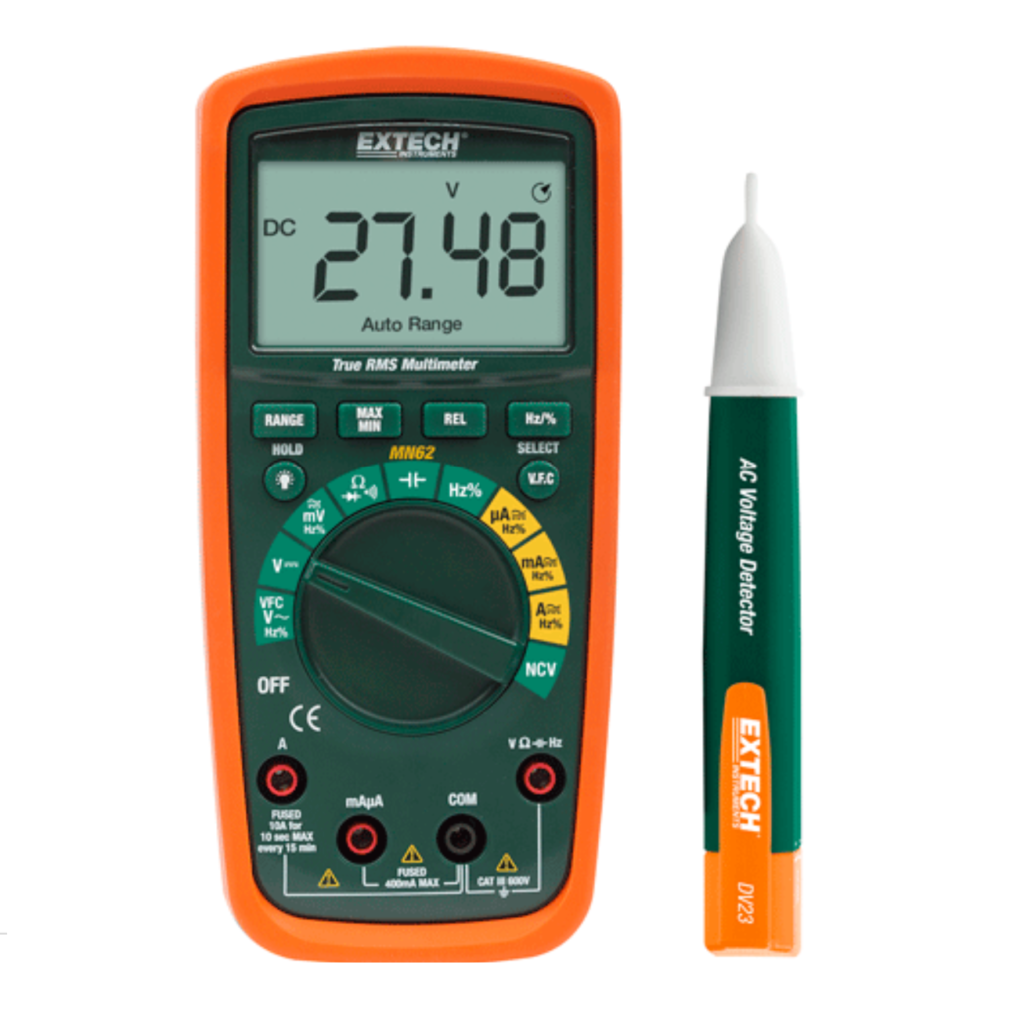Mark Patrick, Mouser Electronics

Specifying the right multimeter for a given task is easy once you have defined what features, functions, and performance levels are required. There is a vast choice of instruments available on the market measuring key electrical parameters, such a current, voltage, and resistance. Somemultimeters can even measure capacitance frequency and temperature. Before deciding on which one to procure, there are ten key aspects to take into consideration.
1. Analog vs Digital
The associated cost of a multimeter largely depends on the range of features and accuracy levels it offers. Digital multimeters are robust and provide a higher level of accuracy than their analog counterparts and have grown in popularity. However, when checking a rapidly varying value, the analogmultimeter is still the preferred instrument of choice, as the needle scale indicates a more general reading – an additional benefit is its much lower price tag.
2. Smart Connectivity
Depending on the level of sophistication and connectivity required, a smart multimetermay be an option to consider. These instruments connect wirelessly to cloud-based data management and storage tools. For example, the FLIR DM285 industrial imaging multimeter features Bluetooth connectivity for wireless data transfer by interfacing through the FLIR Tools mobile app, which is available in both iOS and Android versions.

3. Ease of Calibration
Calibration of digital multimeters has eased significantly over the years. This was previously done by making internal adjustments, such as applying or filing off solder to the high current shunt resistor. These days, calibration is done via software within the unit’s microprocessor. This process takes less time and money, it also improves the accuracy of the instrument.
4. Resolution and Accuracy
The difference between resolution and accuracy can sometimes be confusing. Resolution is the smallest count of the quantity that can be measured and subsequently displayed on the screen. In contrast, accuracy is the percentage degree of certainty a measured value is compared to the actual value. When selecting a multimeter, accuracy is one of the most essential points to consider. Surveying the current digital multimeters available on the market, one that promises one of the highest levels of accuracy is Keysight Technologies’ U1240B series. These handheld units have a DC voltage accuracy of 0.09% and give true RMS readings on their 10,000-count displays.
5. Response Time and Data Logging
Another important attribute to consider is the overall responsiveness of the instrument. Although the response time of analogmultimeters is exceptionally good, there is no way of logging the measured data. Many digital multimeters come with a full data logging capability, whereby data is stored for later analysis.
6. Input Impedance and Sensitivity
The input impedance of a multimeter depends on the sensitivity of the meter movement and the selected range. Models with electronic amplifiers, including all digital and some analog versions, are fixed at a high input impedance; this ensures that the circuit being measured remains undisturbed and assures accuracy. High-end units usually have an input impedance of above 10GOhms for measurement ranges of less than 10V.
7. Auto-Ranging
Choosing a multimeter with an auto-ranging capability helps speed up the measurement process by automatically finding the range for which the parameter’s value is likely to lie. Having this feature does elevate the price of the unit, but it is well worth the investment.
8. True RMS value
It is common for digital multimeters to only providean average reading of an AC waveform, usuallypresented ina root mean square (RMS) format. As these waveforms are not an ideal sine wave,choosing a model that gives true RMS values is advised. Again, this option adds to the cost, but the improved accuracy justifies the expense. TheMN62-K 600V-rated multimeterfrom EXTECH Instruments, for example, has true RMS functionality, which allows for accurate measurements of noisy signals.
9. Rich Feature Set
In addition to the standard parameters, some digital multimeters can also take temperature, capacitance, frequency, and diode measurements. The FLIR Systems DM62/DM66 true RMS industrial multimeters, for example, combines all these features. They are, therefore, handy instruments for both electrical and field service testing and fault diagnosis. As with the MN62-K, it is rated at 600V.
10. Strength and Safety
Ensuring that the multimeterchosen has been evaluated thoroughly for robustness and reliability is also crucial, as is its safety rating. The instrument should be built to last, even when being used continuously or when accidentally dropped.






